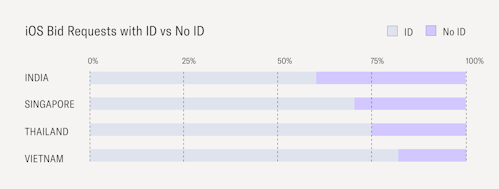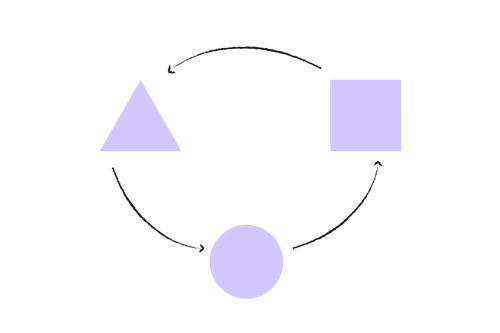Remerge and ironSource: App marketing strategies for 2022
April 01, 2022

In the latest issue of our ID or No ID? series, Maria Abdull Latif, Regional Manager, INSEA at Remerge, shares her thoughts on how the programmatic advertising industry is shaping up in 2022 and looks at app marketing trends across India and Southeast Asia. Also, Ari Brandt, VP Global Marketplace & Strategic Development at ironSource, discusses how advertisers are navigating the privacy-first mobile marketing landscape, the benefits of SKAdNetwork campaigns, and the importance of creatives for anonymous audiences.
Download the full version of the report here.
ATT sparks a change in the mindset of privacy-focused app marketers
Maria Abdull Latif, Regional Manager, INSEA, Remerge

The launch of the App Tracking Transparency (ATT) framework did not bring about the end of ID-based advertising. It did, however, ignite a change in the mindset of app marketers; many are now rethinking their programmatic advertising strategies and how they can evolve in the privacy-first era.
Today, there are more discussions around value exchanges when requesting user data and how ad tech organizations can address consumer concerns about the storage and usage of personal information. Compared to a few years ago, people have much more control over their data, and in 2022 I think they will continue to learn about how tech companies use this information. So far we’ve seen that a sizable number of users share their IDs and opt-in to ad tracking on their iOS mobile devices. This is a sign that many users still appreciate the benefits of relevant ads and personalized messaging.
Empowering users to make decisions about their privacy in the app ecosystem doesn't necessarily mean they will opt to remain anonymous. It's important to address that users can now choose what they deem fair when trading their personal data with the apps they use. We constantly talk to our clients about how they can develop a value exchange by showing personalized ads that serve their users and put their needs center stage. Will we see higher opt-in rates in the future? I, for one, am confident that if app businesses delve deeper into this topic in 2022, the industry will see richer app experiences that can influence growth in opt-in numbers.
« Our post-IDFA dashboard data shows a high amount of ID bid requests for iOS users across India and Southeast Asia. »
Maria Abdull Latif, Regional Manager, INSEA, Remerge
Android sees growth across India and Southeast Asia
Budgets have shifted to Android in India and Southeast Asia, predominantly because this is the largest operating system in the market (Android accounts for approximately 75% of the global app user ecosystem). Re-engagement and retention campaigns on Android remain unaffected by Apple’s privacy updates and provide an impressive return on investment (ROI) — however, this may not be the case forever. App marketers should continue taking advantage of this situation, but they must prepare themselves for the future. It’s only a matter of time until Android introduces its own privacy framework.

Our post-IDFA dashboard data shows a high amount of ID bid requests for iOS users across India and Southeast Asia. As of January 2022, 61% of bid requests in India came with an ID, while in Southeast Asian countries like Singapore (70%), Thailand (75%), and Vietnam (82%), we also see high volumes of ID bid requests on iOS. Compared to the percentage of ID bid requests in other major markets that are lower, like the US (48%) and the UK (53%), the INSEA region has a bigger potential for app marketers to experiment with programmatic advertising campaigns for identifiable audiences on iOS.
Advertisers are quickly adapting to the privacy-first era
Ari Brandt, VP Global Marketplace, ironSource

Since the launch of the ATT framework almost twelve months ago, we see that advertisers continue to adapt to the changes in the ecosystem and that they’re finding success with in-app networks like ironSource. The rollout of ATT has also forced advertisers to think about how they optimize their supply path and work more effectively with programmatic partners. We’ve always championed transparency and privacy protections for our ecosystem, and recently enhanced and externalized the ironSource Exchange (iSX) to provide our publisher partners with even more granular insight into their demand sources.
At ironSource, we see that traditional brand advertisers continue to add performant inventory sources like in-app rewarded video and interstitial video to their plans, especially with the widespread adoption of biddable inventory by app developers. We also see a much bigger interest in the adoption and testing of sophisticated creatives and creative testing for units like interactive end-cards and playable units that succeed in-app, and can be delivered programmatically.
« In a privacy-first world, effective and impactful creatives will become increasingly critical to the success of user acquisition campaigns. »
Ari Brandt, VP Global Marketplace, ironSource
App marketers must focus on higher-value engagement in a post-IDFA world
Now that app marketers are adapting to a post-identifier world, we expect to see them take more sophisticated approaches to how they value media and ROI. Traditionally, they have looked at retargeting campaigns differently than user acquisition campaigns and set separate goals for each; in a post-identifier world where advertisers can’t limit re-downloads, they have to work in an environment where they give up granular control but place a higher value on engagement across their campaign. We’ve seen campaigns where re-downloads outperformed new downloads in terms of return on advertising spend (ROAS), and we believe advertisers will adopt a more holistic approach to campaign goal setting.
Effective creatives will be crucial for user acquisition campaigns
One of the biggest challenges we see is a shift from highly targeted channels to running ads in contextual environments and managing these appropriately. Advertisers will have to become more accustomed to running on channels that don’t offer granular targeting and figuring out how to value them appropriately, along with managing KPIs and creatives across a more diverse set of channels.
In a privacy-first world, effective and impactful creatives will become increasingly critical to the success of user acquisition campaigns. App marketers will need to adopt a culture of continual testing and experimentation and work with solution providers that provide creativity at scale as well as the necessary insights to manage their campaigns across channels. Marketers also must continue to manage their channels intelligently and balance testing new options like on-device channels with tried-and-true channels like social and in-app acquisition.
More insights from Remerge and ironSource





